Those of you who follow my little portion of the Substack universe have no doubt figured by now that I love to capture birds with my camera. I’ve been fascinated by them for years, and what I’ve learned in that time is that it takes lots of patience, often good timing, and often a bit of luck. With the arrival of buds on the trees and warmer temperatures, comes the arrival of migrating birds, particularly Warblers. So with all that in mind, I loaded up my camera bag, threw on my tick-repellent-scented, light-colored hiking pants (you can’t be too careful) and some rugged shoes and off I went in search of these beautiful creatures.
Mass Audubon Tidmarsh Wildlife Sanctuary (according to my friend Chat GPT) is a “481-acre property, that was once a working cranberry farm. It has undergone the largest freshwater ecological restoration in the Northeast, transforming into a diverse landscape of cold-water streams, ponds, forests and woodlands. In 2017, after a significant restoration effort that included the removal of nine dams, Mass Audubon acquired the property to establish the sanctuary. The restoration aimed to return the area to its natural state, enhancing habitats for wildlife and improving ecological resilience.” Since it’s been opened to the public, over 220 species of birds have been recorded there.
The wonderful part of all this is that the sanctuary is a 10 minute drive from my house. I’m there in all four seasons, though summer can be a bit challenging given the lack of shade and places to take a breather, though that’s improving over time. I did inquire a few years back about adding a memorial bench after I’m gone (and having my ashes spread there), and they were perfectly willing to do that for the low, low price of $25,000. I kid you not. So, there may not be a bench there one day with my name on it, but more than likely, a few of my ashes will be scattered along the trails.
But I digress. Yesterday morning dawned warm enough for a light jacket, and it was dry and somewhat cloudy, but not so dark as to make photography more challenging. I arrived early to an empty parking lot. One enters the grounds along a dirt road that in winter time becomes a treacherous stretch of mud and often slippery-as-hell ice due to the slope of the land, and the fact that this is a natural wetland. It’s dry now…for the most part…except for the mud.
The road is lined with forest on both sides for a quarter mile, then opens up to what had been a clay pond, that was once part of the cranberry farm. During the pandemic, that whole area was dug out and restored, something I’ve written about in the past. One can go in either direction to get to the hiking trails, so I went left, towards the lovely boardwalk that was added through the previously inaccessible wetland portion of the area. On my way there I encountered my first bird, perched on a tree stump. A lovely Tree Swallow who delighted me by staying put while I shot his picture from a few different angles.
These birds are here right through the end of the summer and they swarm the area looking for flying insects. They are fast and can turn on a dime as they swoop through the air. At this time of year I often see two of them paired up one of the many nesting boxes throughout the area, where they compete with Eastern Bluebirds for a place to raise their young.
A bit farther down the trail, I spotted a House Wren flitting about in the fallen logs looking for insects.
I entered the boardwalk, creeping along slowly, making as little sound as possible. Birds have keen eyesight and one’s movement can send them off too the brush. Along the way I paid attention to the sights and sounds around me. I am teased by the different bird calls coming from both sides of the boardwalk. My eyes scan the brush on either side, that then gives way to trees beyond. Not a bird in sight! But they’re there for sure, I just can’t see them. According to my Merlin Bird ID app, I recorded the following in one brief span of 42 seconds: Song Sparrow, Tufted Titmouse, Black-and-white Warbler, Northern Cardinal and Osprey, none of which I could see. So I crept along as silently as I could, looking for a bird.
(Note, you may have to turn up your sound to hear all the different birds in this recording.)
I finally spotted a Song Sparrow hidden in a tree, pretty well camouflaged amidst the emerging buds, but I could hear his sweet song over and over.
All along the boardwalk I could hear in the background the sounds of a Black-and-White Warbler, but he never did show himself.
At the end of the trail boardwalk, there is a trail that leads up a steep hill through the woods to an overlook, where one can see much of the landscape below. It’s a marvelous vista. Here’s a view I captured in April 2022 to give you an idea of what it looks like this time of the year as things start to turn green.
From the top of the overlook I can see a vast hillside meadow, which in about a month will look like this.
Tree Swallows and Eastern Bluebirds fly all through this area, which is dotted with well-spaced nesting boxes. Mass Audubon has done a wonderful job seeding this area with wild grasses and flowers and an assortment of evergreens, offering a diverse habitat for the wildlife here.
Down below I see a Northern Flicker emerge from the grass and fly to a post on the far end of the meadow. You’ll have to zoom in to see him better, but he looked great through my lens. That rope was added a few years ago along a gravel path so that those with sight impairment can have a guide to explore the hillside. It also helps to keep folks from wandering too close to the wildlife, lest they emerge covered in ticks.
I wandered down the gravel path that skirts the trees and thick undergrowth that will serve as a great place to see Yellow Warblers in the coming days. Along this path I’ve been lucky to capture a wide range of birds over the years, including a Scarlet Tanager, who hasn’t made an appearance yet this Spring. This shot was taken in early May back in 2022.
As I got down to the lower end of the meadow, I found another Song Sparrow perched on a treetop.
A Tree Swallow took a break on a post.
I slowly made my way down to an intersection of two paths. I knew this might be a good place to spot a Warbler and my patience paid off. A quick flash of yellow caught my eye and I was able to track down a Palm Warbler on a nearby branch. He didn’t stay long, but I got at least one decent shot in the few seconds he was perched there.
I took the path to the left, a route I have followed often which leads to a bridge where I was hoping to spot some birds along the stream that runs through here. I was delighted to find an Eastern Phoebe gathering material for her nest. I have typically found them here this time of the year.
I started to make my way along the trail that leads back to the boardwalk and once again I was treated to some birds in the wetland. I found a male and female Red-winged Blackbird among the reeds and cattails.
I didn’t find anything as I moved back along the boardwalk, and the light was getting pretty bright. The sun was emerging and it was getting warm, so it was time to head to the car. One last photo from the area that had been the clay pond. Another House Wren singing on a tree stump.
All in all, it was a most enjoyable bird walk. I got in some exercise, I got some great pictures, and for sure I got away from looking at the news for a while. Believe it or not, I spent a few hours in the afternoon on another bird hike on the beautiful grounds of the Manomet Conservation Sciences. More photos to review, but here are a few I managed to get as I strolled the grounds.
Thanks for reading and I hope you enjoyed this little slice of nature.



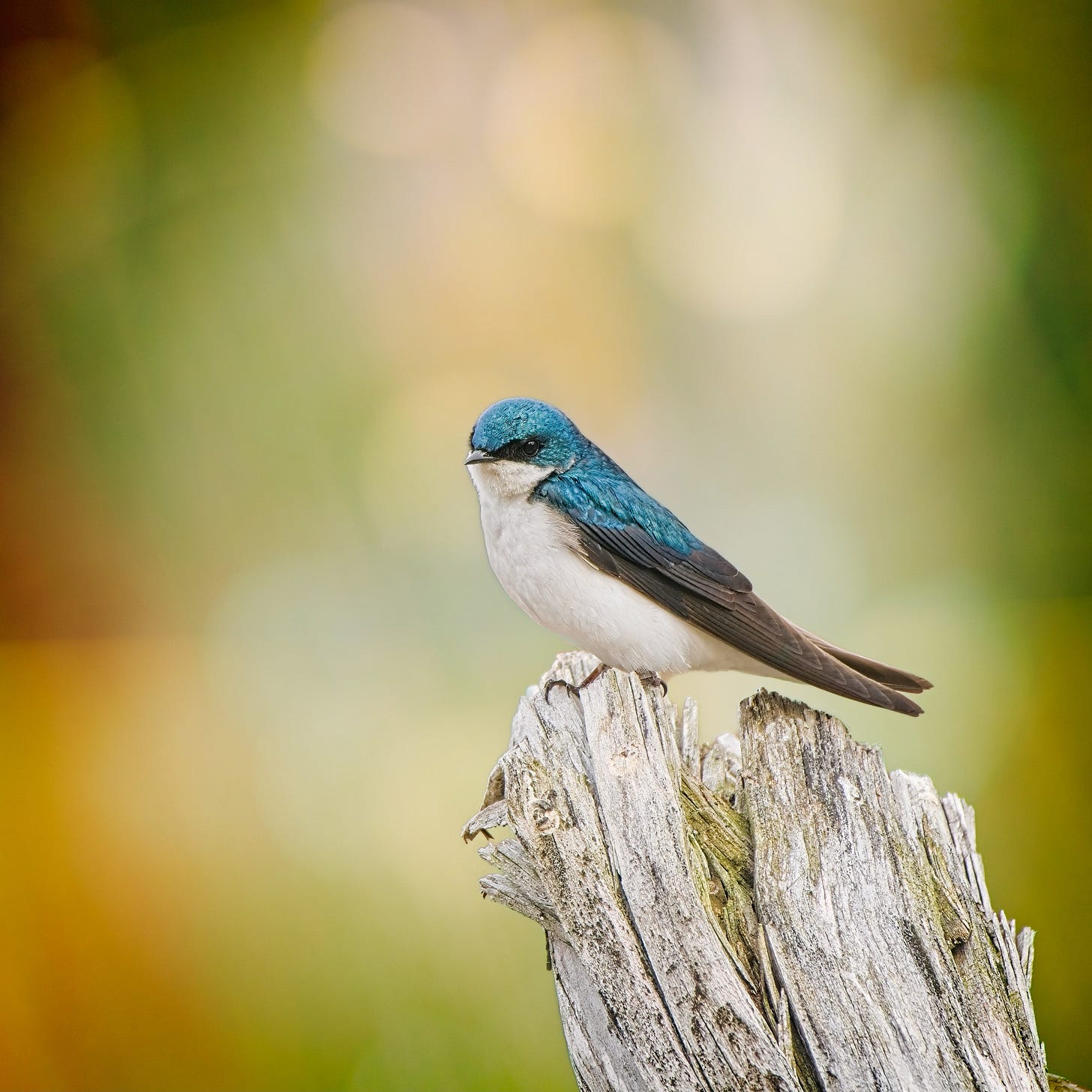





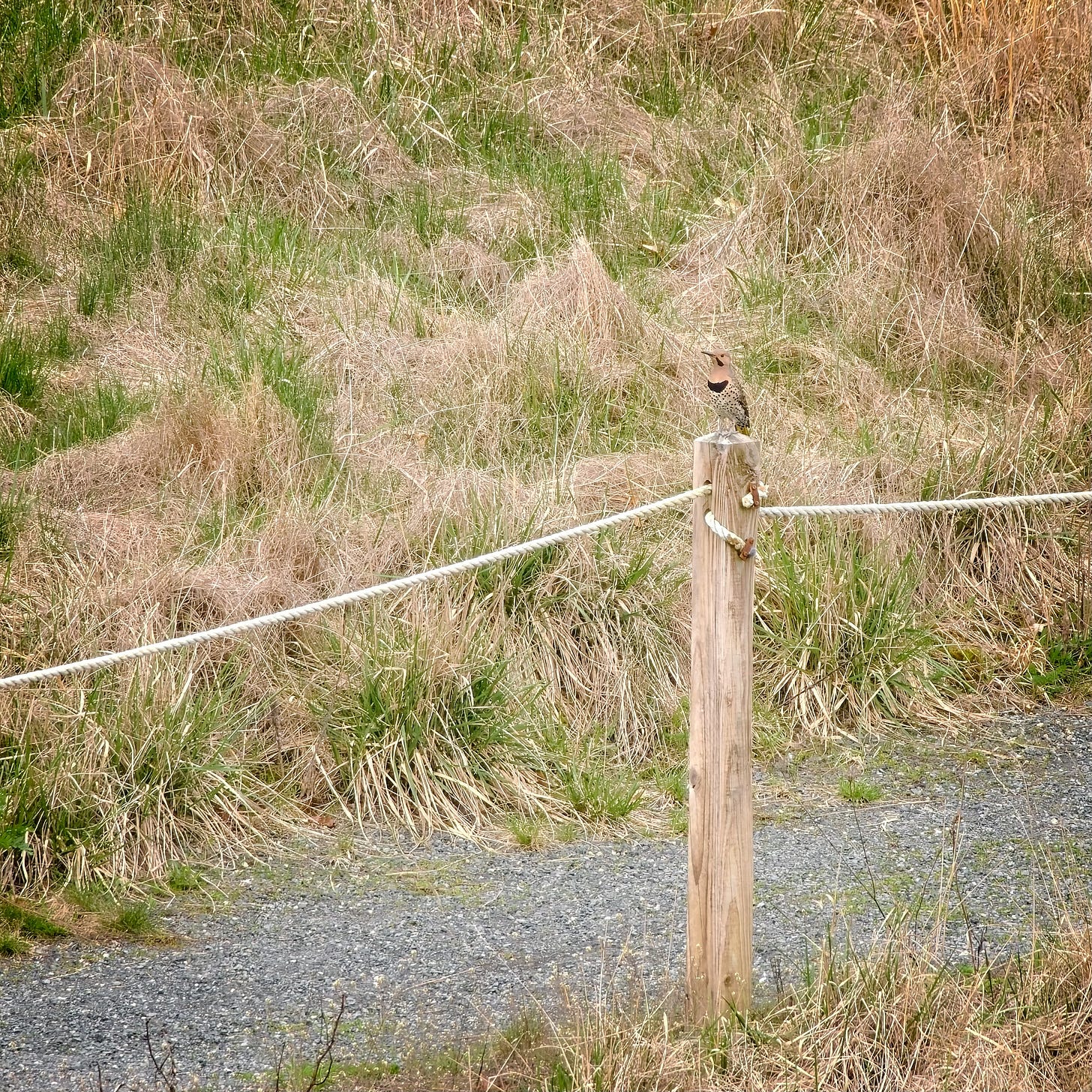
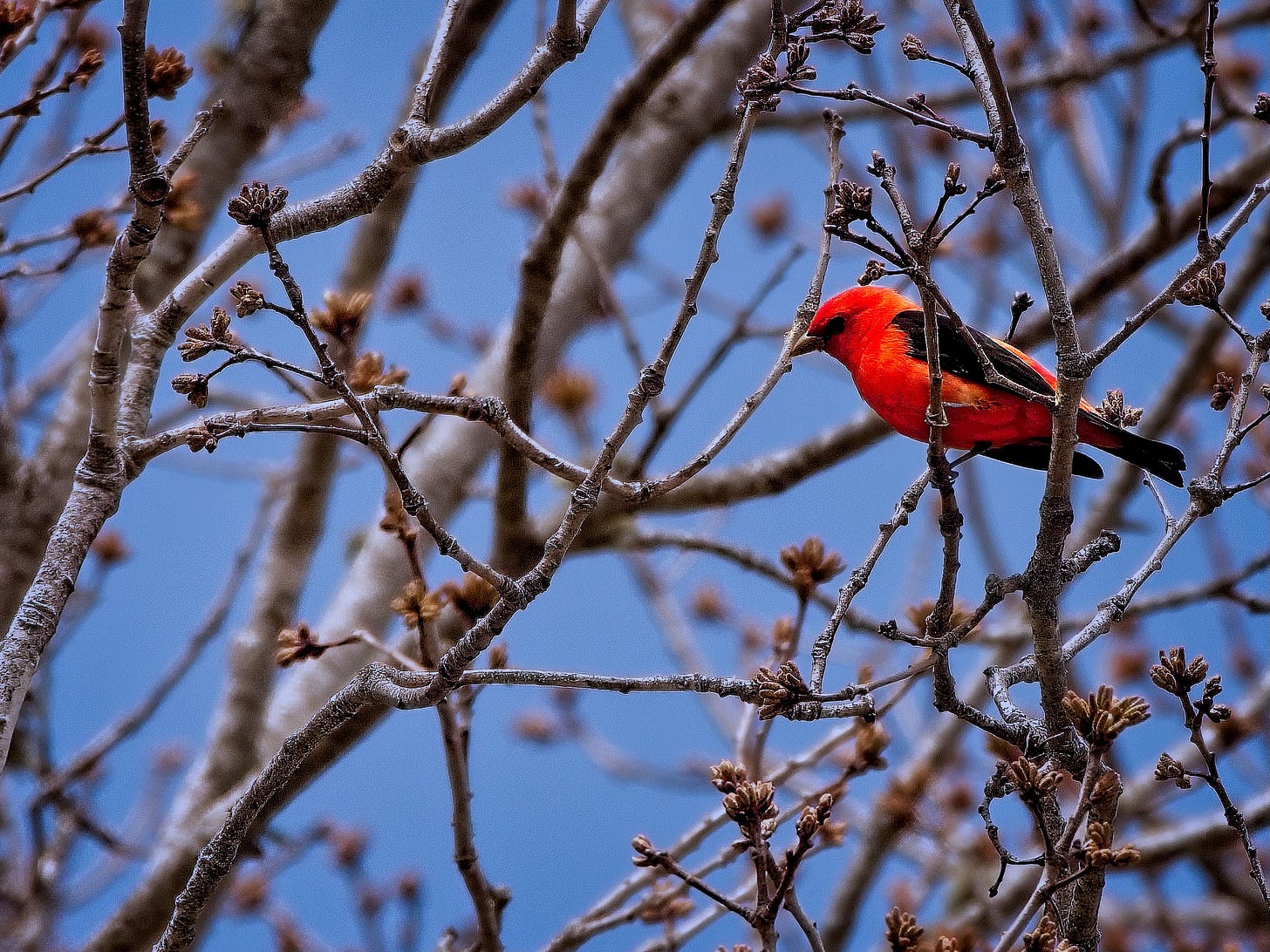
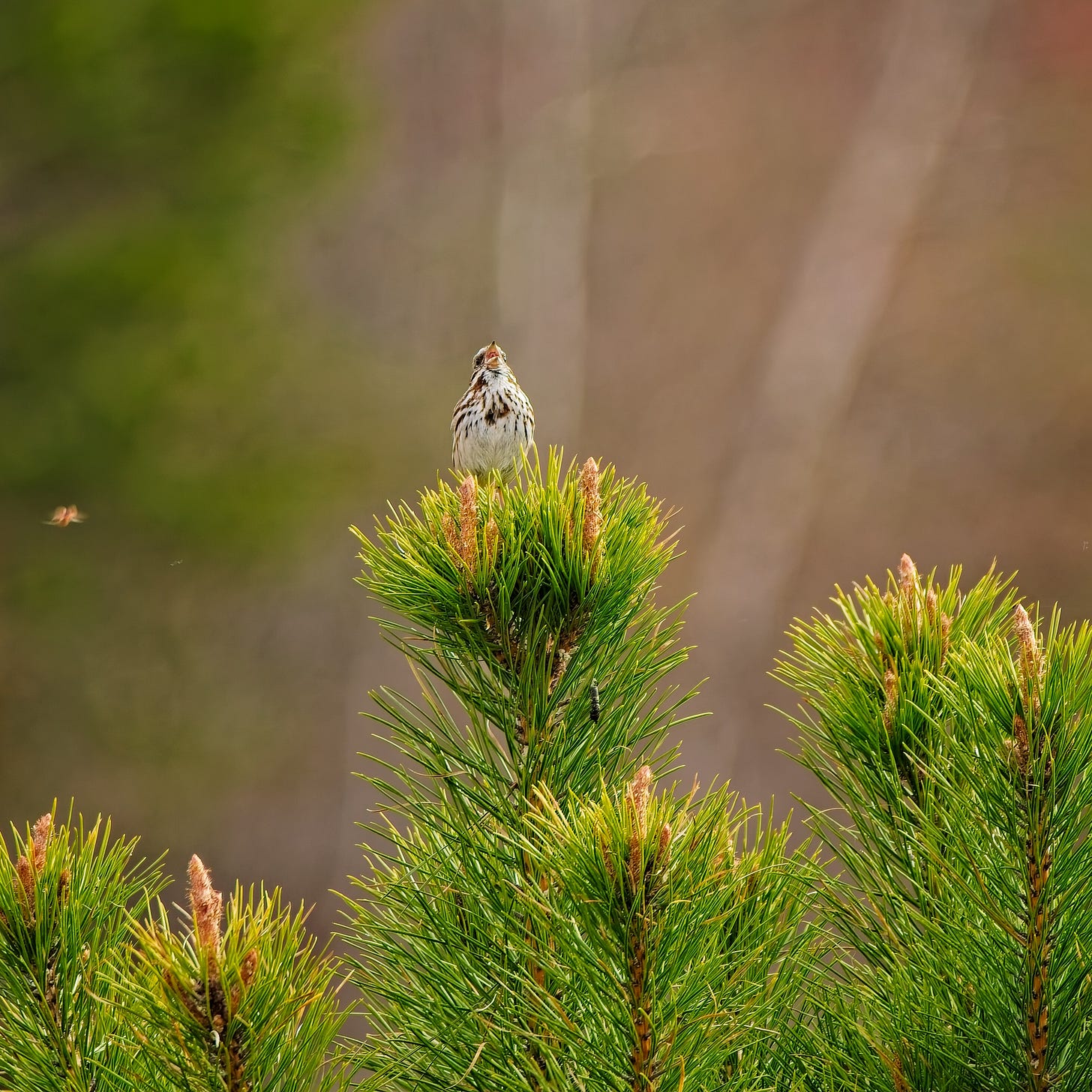







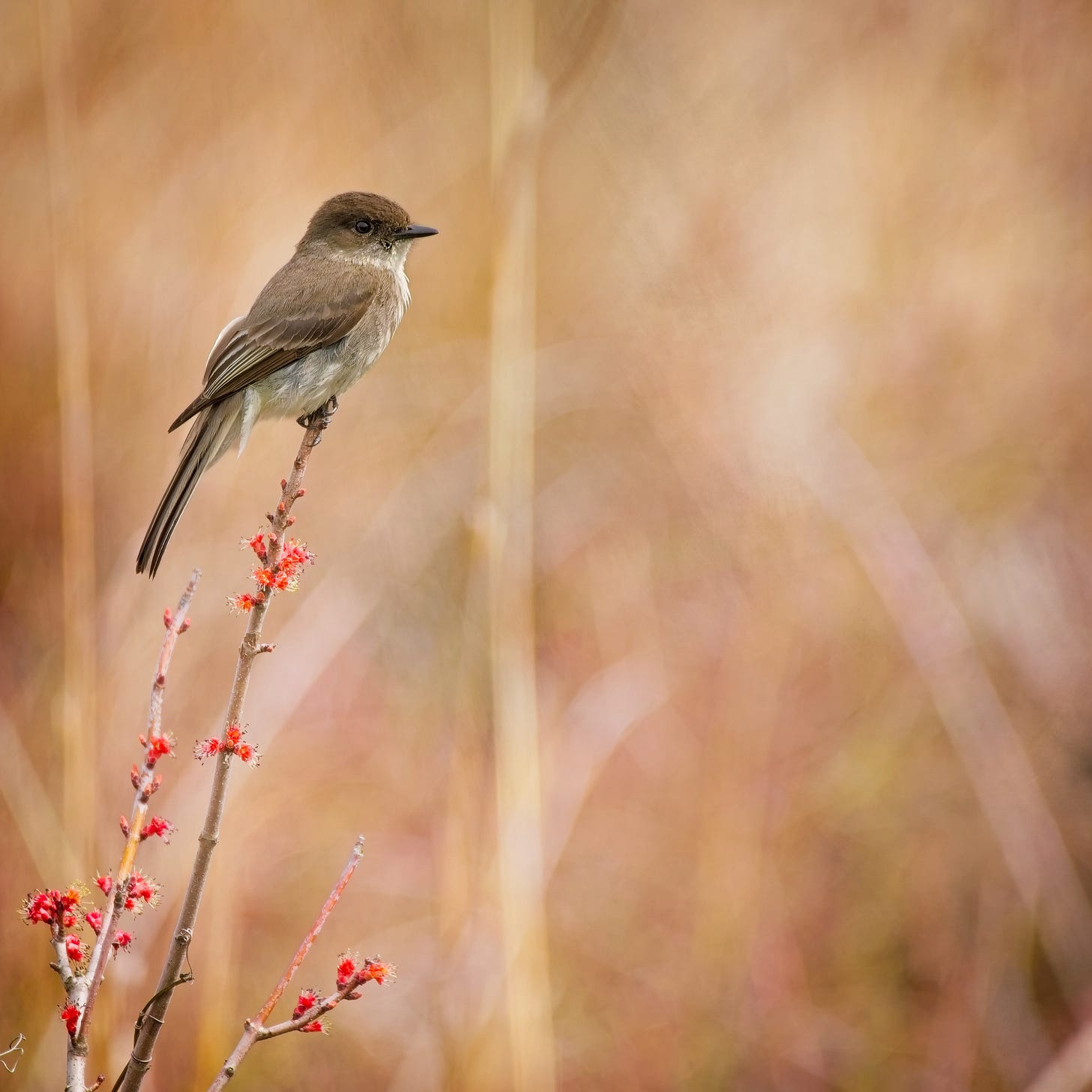
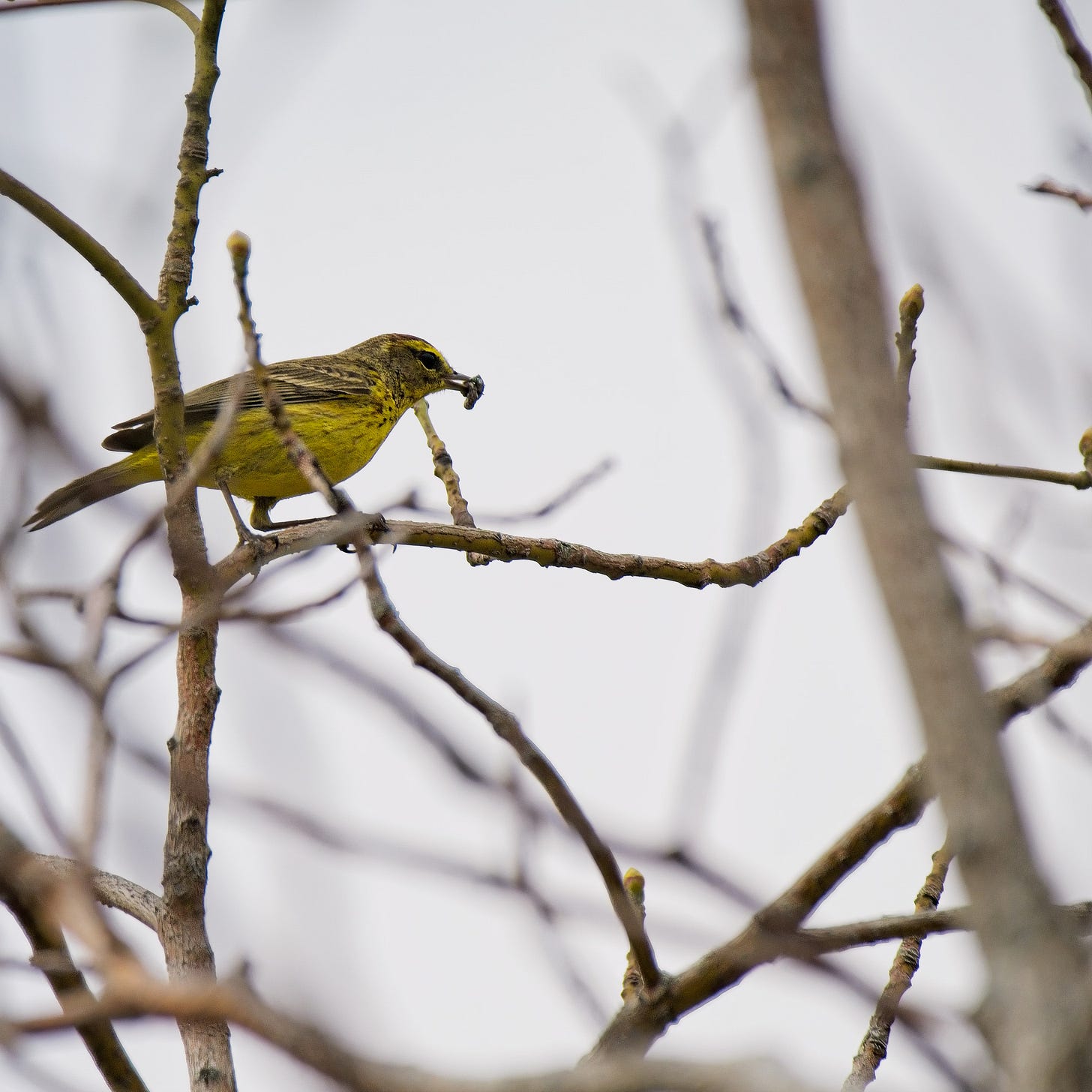


Wonderful pictures and super narrative Bob, thanks for sharing.
What a great day you had! I particularly love the photos with reeds as background, one of my favourite aesthetics.